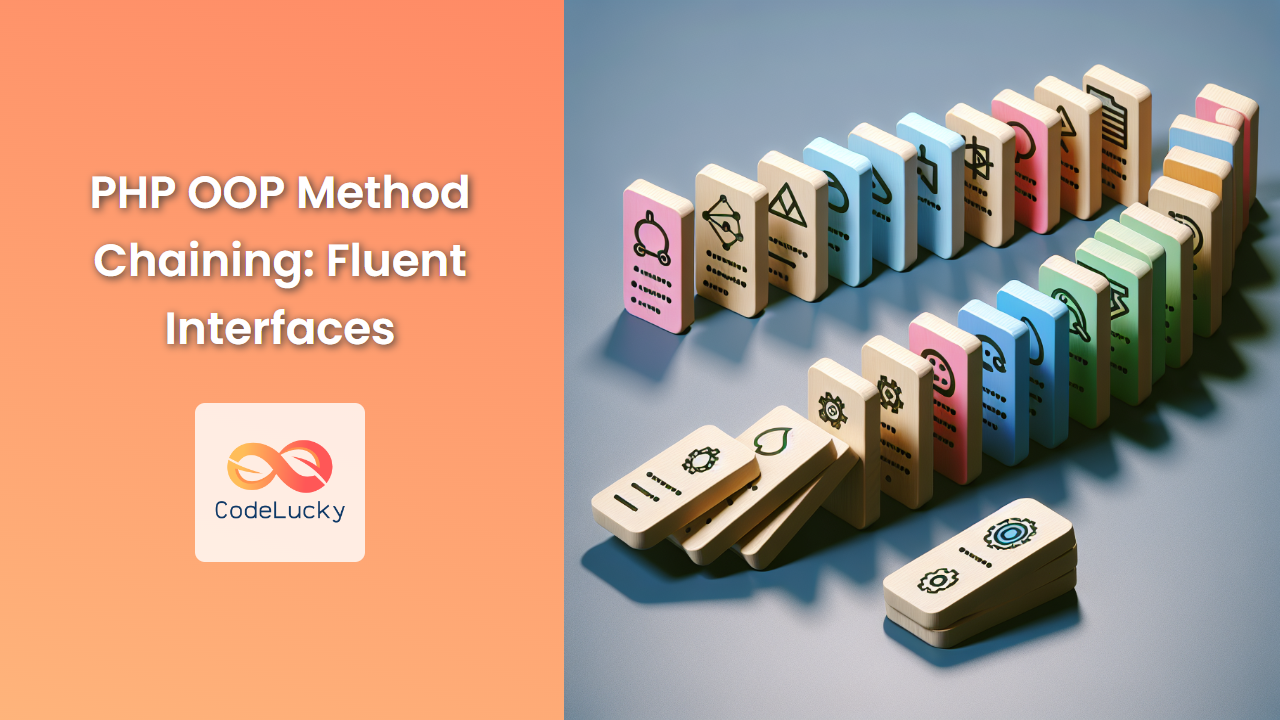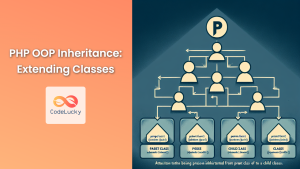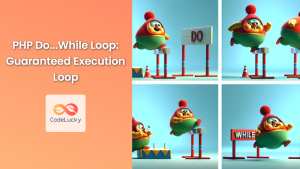In the world of Object-Oriented Programming (OOP), method chaining is a powerful technique that allows developers to write more concise and readable code. This approach, also known as fluent interfaces, enables you to call multiple methods on the same object in a single statement. Let’s dive deep into the concept of method chaining in PHP and explore how it can enhance your coding experience.
Understanding Method Chaining
Method chaining is a programming pattern where multiple method calls are chained together in a single line of code. Each method in the chain returns an object, allowing the next method to be called on the result. This creates a fluent interface, making the code more intuitive and easier to read.
Let’s start with a simple example to illustrate this concept:
<?php
class Calculator {
private $result = 0;
public function add($number) {
$this->result += $number;
return $this;
}
public function subtract($number) {
$this->result -= $number;
return $this;
}
public function getResult() {
return $this->result;
}
}
$calc = new Calculator();
$result = $calc->add(5)->subtract(3)->add(10)->getResult();
echo "Result: " . $result; // Output: Result: 12
In this example, we’ve created a Calculator class with methods that can be chained together. Each method (add and subtract) returns $this, which is a reference to the current object. This allows us to call another method immediately after.
🔍 Key Point: The secret to method chaining is returning $this at the end of each method that you want to be chainable.
Benefits of Method Chaining
- Readability: Chained methods can make code more readable by clearly showing the sequence of operations.
- Conciseness: It reduces the need for intermediate variables, making the code more compact.
- Fluent Interface: It creates a more natural, language-like way of writing code.
- Reduced Redundancy: You don’t need to repeat the object name for each method call.
Creating a Fluent Interface
Let’s create a more complex example to demonstrate the power of fluent interfaces. We’ll build a QueryBuilder class that constructs SQL queries:
<?php
class QueryBuilder {
private $table;
private $select = ['*'];
private $where = [];
private $orderBy = [];
public function from($table) {
$this->table = $table;
return $this;
}
public function select($columns) {
$this->select = is_array($columns) ? $columns : func_get_args();
return $this;
}
public function where($column, $operator, $value) {
$this->where[] = "$column $operator '$value'";
return $this;
}
public function orderBy($column, $direction = 'ASC') {
$this->orderBy[] = "$column $direction";
return $this;
}
public function build() {
$query = "SELECT " . implode(', ', $this->select);
$query .= " FROM " . $this->table;
if (!empty($this->where)) {
$query .= " WHERE " . implode(' AND ', $this->where);
}
if (!empty($this->orderBy)) {
$query .= " ORDER BY " . implode(', ', $this->orderBy);
}
return $query;
}
}
// Usage
$query = (new QueryBuilder())
->select('id', 'name', 'email')
->from('users')
->where('age', '>', 18)
->where('status', '=', 'active')
->orderBy('name')
->build();
echo $query;
This will output:
SELECT id, name, email FROM users WHERE age > '18' AND status = 'active' ORDER BY name ASC
In this example, we’ve created a fluent interface for building SQL queries. Each method in the QueryBuilder class returns $this, allowing us to chain method calls. The final build() method constructs and returns the actual SQL query string.
💡 Pro Tip: Method chaining is particularly useful for builder patterns, like the QueryBuilder in this example, where you’re constructing a complex object step by step.
Best Practices for Method Chaining
- Return
$this: Always return$thisfrom methods that you want to be chainable. - Immutability: Consider making your objects immutable by returning new instances instead of modifying the current one.
- Method Names: Use verb-like method names that clearly describe the action being performed.
- Avoid Side Effects: Chainable methods should ideally not have side effects outside of modifying the object’s state.
- Break Long Chains: For readability, break long method chains into multiple lines.
Let’s modify our QueryBuilder to follow the immutability principle:
<?php
class ImmutableQueryBuilder {
private $table;
private $select = ['*'];
private $where = [];
private $orderBy = [];
public function from($table) {
$new = clone $this;
$new->table = $table;
return $new;
}
public function select($columns) {
$new = clone $this;
$new->select = is_array($columns) ? $columns : func_get_args();
return $new;
}
public function where($column, $operator, $value) {
$new = clone $this;
$new->where[] = "$column $operator '$value'";
return $new;
}
public function orderBy($column, $direction = 'ASC') {
$new = clone $this;
$new->orderBy[] = "$column $direction";
return $new;
}
public function build() {
// Same as before
}
}
// Usage
$baseQuery = new ImmutableQueryBuilder();
$usersQuery = $baseQuery
->select('id', 'name', 'email')
->from('users')
->where('status', '=', 'active');
$youngUsersQuery = $usersQuery
->where('age', '<', 30)
->orderBy('name');
echo $usersQuery->build() . "\n";
echo $youngUsersQuery->build();
This will output:
SELECT id, name, email FROM users WHERE status = 'active'
SELECT id, name, email FROM users WHERE status = 'active' AND age < '30' ORDER BY name ASC
In this immutable version, each method returns a new instance of the object instead of modifying the existing one. This allows us to create multiple queries based on a common starting point without affecting the original query.
Advanced Method Chaining Techniques
1. Conditional Method Chaining
Sometimes, you might want to apply a method only if a certain condition is met. You can create a method that accepts a callback to achieve this:
<?php
class ConditionalQueryBuilder {
// ... other methods ...
public function whenTrue($condition, $callback) {
if ($condition) {
$callback($this);
}
return $this;
}
}
// Usage
$query = (new ConditionalQueryBuilder())
->select('*')
->from('users')
->whenTrue($userIsAdmin, function($query) {
$query->where('is_admin', '=', true);
})
->build();
2. Method Chaining with Different Return Types
In some cases, you might want to end your method chain with a method that returns a different type. This is perfectly valid and often useful:
<?php
class User {
private $attributes = [];
public function setAttribute($key, $value) {
$this->attributes[$key] = $value;
return $this;
}
public function save() {
// Save to database
return true; // or false if save failed
}
}
// Usage
$result = (new User())
->setAttribute('name', 'John Doe')
->setAttribute('email', '[email protected]')
->save();
echo $result ? "User saved successfully" : "Failed to save user";
In this example, the save() method ends the chain and returns a boolean instead of the object itself.
Potential Pitfalls of Method Chaining
While method chaining can lead to more readable and concise code, it’s not without its drawbacks:
- Debugging Difficulty: When an error occurs in a method chain, it can be harder to pinpoint which method caused the issue.
- Reduced Flexibility: Chained methods often need to return
$this, which can limit their functionality. - Violation of Law of Demeter: Extensive method chaining can lead to tight coupling between objects.
- Overuse: Not every method needs to be chainable. Overusing this pattern can lead to confusing and hard-to-maintain code.
To mitigate these issues, consider the following tips:
- Use method chaining judiciously. Not every class needs to be a fluent interface.
- Provide both chainable and non-chainable versions of methods when appropriate.
- Use proper IDE tools that support code navigation and debugging of method chains.
- Break long chains into multiple lines for better readability and easier debugging.
Conclusion
Method chaining is a powerful technique in PHP OOP that can lead to more expressive and readable code. By returning $this from your methods, you create a fluent interface that allows for intuitive method chaining. This approach is particularly useful for builder patterns and can significantly enhance the developer experience when working with your classes.
However, like any programming pattern, it should be used thoughtfully. Consider the trade-offs between readability, maintainability, and flexibility when deciding whether to implement method chaining in your PHP classes.
By mastering method chaining, you’ll add a valuable tool to your PHP programming toolkit, enabling you to write more elegant and efficient code. Happy coding! 🚀💻



















